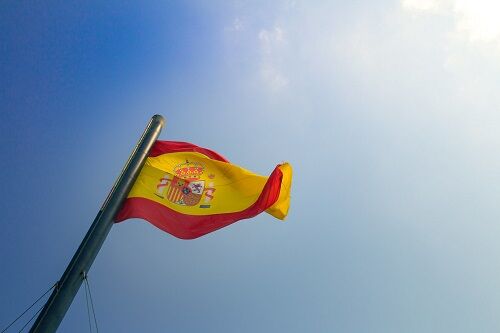
Spanish culture has contributed powerfully to the evolution of the Spanish language. The customs and identity of Spain stand out for several reasons. Particularly, Spanish traditions are unique and have influenced the culture of Latin American countries.
Still, some Spanish traditions are only possible to admire and experience if you take a trip to Spain. The breathtaking architecture, delicious food, the kind and warm people, and the astonishing celebrations are all worth honoring.
Pack your bags and join me for an insightful Introduction to Spanish culture, traditions, and beliefs!
Spain has played a crucial role in world history. Firstly, Spain is the birthplace of the second most spoken language around the world. Secondly, it is home to fascinating Spanish culture and traditions.

Although the majority of the population speaks Spanish or Castellano, they speak other native languages there. Spanish is the second tongue of people who speak Basque, Catalan, Valencian, and Galician.
75% of Spain’s population speaks Castilian, 16% speak Catalan, and the remaining 9% speak the other tongues.
The variety of languages contributes to a diverse Spanish culture that draws the attention of millions of tourists from all corners of the world. Small and large cities are home to influential architecture, rich music, vivid celebrations, and delicious foods.
Discovering Spain’s charming traditions and culture is worth your while if you’re learning Spanish. It’s the perfect opportunity to understand the language’s origin and social context. It gives you an insight on how society and identity are formed in Spain.
This familiarity with Spanish traditions makes you contextualize, absorb vocabulary and idioms, and become more confident in your language skills.
Let’s explore the most prominent and interesting facts about Spanish culture!
Greetings and introductions are a fundamental particularity of Spanish culture.
Acquaintances say “hi” to each other the first time with a handshake and keep it simple. If you’ve met the person a few times already, the handshake will be warmer and may come with a pat on the shoulder. More familiarity with a person comes with a hug or with a double kiss on the cheek.
The double kiss on the cheek is the signature of Spain, Latin America took this part of Spanish culture and made its own. In many Latin American Spanish-speaking countries, people greet each other with one kiss on the cheek.
Most people will introduce themselves using only their first names. Each person has typically two first names and one last name they use. Older adults are introduced with the prefixes Don and Doña (Mr. & Mrs), to show them more respect and formality.
Religion is an essential element of Spanish culture.
Almost every Spanish city has Catholic churches and Cathedrals. The predominant religion in Spain is Catholicism. The second largest religion of Spain is Islam due to recent arrivals of African and Middle Eastern refugees. There is also a large portion of Atheists and a small percentage of Jewish people.
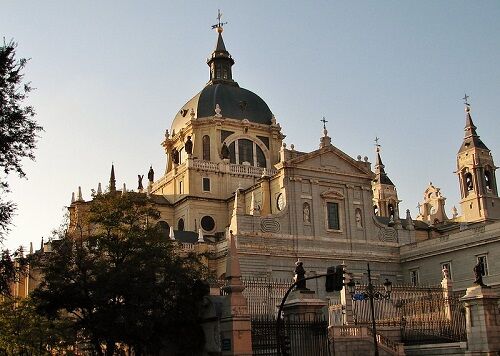
Nevertheless, religious holidays and traditions are quite popular with all the majority of people in the region.
Las procesiones (processions) are a prominent tradition of Spain that dates back to the 16 century. They are organized marches similar to parades that are a manifestation of faith and commemoration of religious happenings.
Processions are such an important part of Spanish culture, the tradition was taken to Latin America and became highly popular in countries like Guatemala.
Spain’s rich history comes with prominent celebrations and traditions.
Semana Santa (Holy Week) is one of the largest celebrations. It’s known for having processions that commemorate the Passion of Christ.
El Día de Reyes Magos (Day of the Three Kings) is widely celebrated across the country and is a favorite holiday for children. They receive gifts and there’s colorful parades in the cities where they celebrate their long awaited arrival.
Spanish “fiestas” (festivals) are large celebrations and carnivals devoted to a specific Saint or City. These fiestas have traditional foods, fireworks, dancing, handmade decorations, parades, concerts, and theater.
Other traditions like the running of the bulls of San Fermín in Pamplona, and the tomato fights of la Tomatina are experiences that draw millions of people and tourists to celebrate Spanish culture.
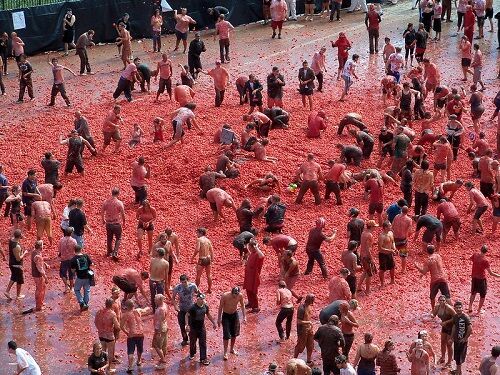
Traditional styled clothing representative of Spanish culture is possible to admire in toreros (bullfighters), Flamenco dancers, and during festivities.
Some traditional pieces worth highlighting are:
Spain is known for having a thriving fashion industry. The best designers and fashion brands of the world have a presence in Spain’s fashion events.

High-end designers like Cristóbal Balenciaga, Paco Rabanne, Manolo Blahnik, and Agatha Ruiz de la Prada are Spanish.
Spain is home to ingenious representatives of art and architecture. Well-known artists like Pablo Picasso, Francisco Goya, Salvador Dalí, and Joan Miró are Spanish.
The country is home to beloved museums of classical and contemporary art that pay homage to Spanish culture, traditions, and history.
Get inspired with this empowering list of 12 contemporary Spanish Female Artists that are redefining Spain’s art scene.
Barcelona, Spain’s most popular tourist destination, was the home of pioneer architect, Antoni Gaudí. He played a key role in the design of whimsical and complex architectural masterpieces in the Catalan city such as La Sagrada Familia and Parc Güell.
Spanish culture is very-well represented in literature. As the original representative of the Spanish language, the country harbours literary treasures that date back hundreds of years. Don Quixote is considered the best example of Spanish literature and language. The novel by author Miguel de Cervantes is over 400 years old.
Dive deep into the History of Don Quixote and Miguel de Cervantes in this fascinating blog post.
Spanish culture is known for having well-known musical melodies and rhythms. Spain has produced incredibly talented songwriters and artists like Plácido Domingo, Enrique and Julio Iglesias, Paco de Lucía, Alejandro Sanz, and Rosalía.
Spanish music genres vary according to region. Flamenco, Rumba Catalana, and Bolero are accompanied by string musical instruments and powerful dance. Modern and classical artists often mix Flamenco and other traditional Spanish music with modern beats.
Roman and Celtic influence is evident in the varied styles of Spanish music and dancing. Flamenco is a signature dance often associated with Spain’s image.
Here’s a list of other popular Spanish dances:
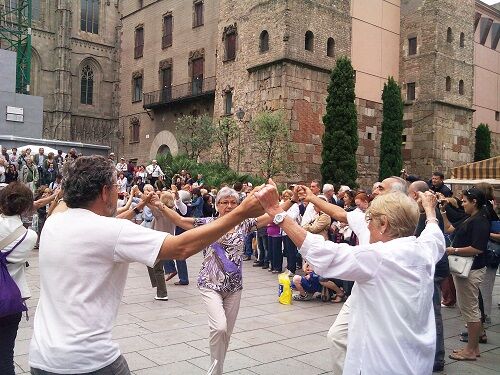
Did you know Flamenco and Sardana are considered Intangible Cultural Heritage of Humanity? Learn what makes them special in this interesting article about Spanish Dances.
El fútbol (soccer) is the highest-grossing sport in Spain.
Spain’s official soccer team won the 2010 FIFA World Cup. La Liga Española (Spanish league) has some of the best performing teams in the world. Soccer clubs like Barcelona and Real Madrid, have the best names and superstars. Literally, the whole country gets paralized when these two teams face each other in El Clásico.
The country is also known for other groundbreaking athletes and champions. Tennis player Rafael Nadal and Formula 1 champion Fernando Alonso, set high standards for their competitors around the world.

What’s more, soccer and tennis aren’t the only sports the Spanish excel on. You’ll find that several types of sports like basketball, water polo, and surfing; are enjoyed throughout Spain.
Start a conversation about sports with this practical Guide to Spanish Sports Vocabulary.
Food is a strong foundation of Spanish culture. The blend of Arab, Roman, Jewish, and Mediterranean cuisine uses top ingredients and flavors.
Spain produces large quantities of high-quality olive oil and wine. Predominant ingredients of Spanish gastronomy include garlic, tomato, pepper, potatoes, beans, and curated meats.
Spanish people enjoy a style of appetizer and snack known as tapas. Las tapas are usually a mix of small preparations like cold cuts, cheeses, croquetas (croquettes), calamares (squid), and more.
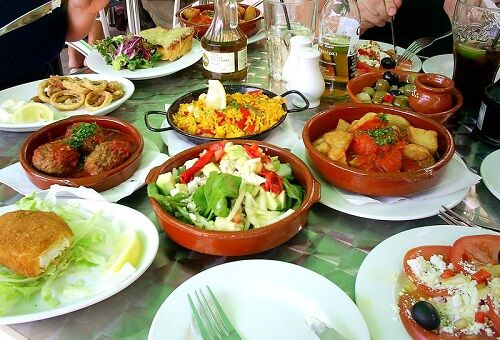
Savory food and flavors also make Spain the home of world-class chefs, elite cooking schools, and top-rated Michelin Star restaurants.
Here’s a list of representative dishes of Spanish culture and traditions:
Pick up useful Spanish vocabulary in this appetizing blog post about The Origin and History of the Spanish Paella.
It is a short nap Spanish people take in the early afternoon. The tradition has expanded to the Philippines and Mexico. During siesta time the majority of businesses close.
To celebrate New Year, people in Spain eat a grape for each month of the year for good luck.
The Spanish are superstitious about the number 13. Also, some Spanish people believe a hat on your bed is a bad omen.
When a Spanish family moves to a new house they need to buy a new broom. They believe bringing an old broom is bad luck.
In Catalonia, children get gifts from a wooden log-looking character known as el Tío de Nadal.
In Spanish culture, you’re expected to bring a gift when you’re invited to someone’s house for dinner.
Certain Spanish traditions evolved into their own Latin American version. Such is the case of Semana Santa.
Experience these traditions for yourself and plan a cultural trip to Spain. The stylish fashion, incredible architecture, delicious food, colorful rhythms, and richness of Spanish culture are guaranteed to mesmerize you.
A trip to Spain is an ideal opportunity for you to practice your Spanish. Coming up close to Spanish traditions and native speakers enables you to understand the origin of the language and its surrounding context.
Sign up for a free class with our certified teachers from Guatemala. They provide an excellent learning environment and support you in developing advanced fluency. Prepare for your trip to Spain with useful vocabulary and next-level Spanish abilities.

Native speaker of English and Spanish, I’m a sustainable travel and social impact entrepreneur who loves going to new places and meeting people from different cultures and backgrounds. I love spending time with my family and being outdoors with my dogs. Writing, communicating, and creating are my passions. I strongly believe there are more creative ways to solve the issues our world is facing and I like doing my part in any way I can.
Latest posts by Sofía Godoy (see all)